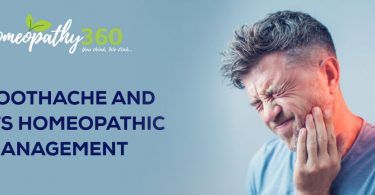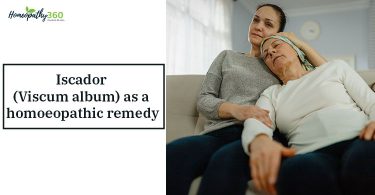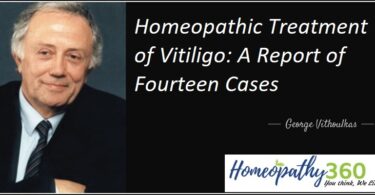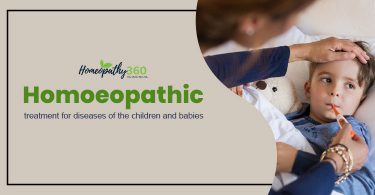 Introduction
Introduction
Homoeopathy is a therapeutic method for treating diseases by applying medicines which are capable of producing similar symptoms as that of the disease from which the patient suffers. It is based on the fixed law that is “Similia Similibus Curentur” which means “Let like be cured by like”. As per homoeopathic law to remove and annihilate the disease permanently in its whole extent in the most harmless way from the human being, only a single medicine with accurate potency in a minimum dose at a time and proper repetition of dose is required.
Homoeopathy
Homoeopathy is an ideal & gentle therapeutic method which gives rapidly permanent restoration of the health by removing & annihilating the disease in its whole extent in the most harmless way.
History of Discovery
The 10th April’ 1755 is a ‘Red Letter Day’ in the ‘Annals of Medicine’ which witnessed the Birth of a Reformer, a Philanthropist in the person of Christian Friedrich Samuel Hahnemann, Son of Christian Gottfried Hahnemann & Johana Christiana of Germany.
Samuel Hahnemann was a brilliant student. He was fluent in languages like Greek, Latin, English, Italian, Hebrew, Syriac, Arabic, Spanish, German & some smattering of Chaldiac. He acquired his M.D. degree from Erlangen University in the year’1779. After this he practiced allopathic medicine and in this field he excelled.
In the year’ 1790, whilst translating Cullen’s Materia Medica, he came to know about the therapeutics indications of Peruvian bark (Cinchona Officinalis) that it is bitter in taste & cures Intermittent fever. Hahnemann dissatisfied with this explanation & by way of experiment he took the medicine himself twice a day (about four drams). Eventually, he noticed symptoms very similar to ague of Malaria fever. This unexpected result set up in his mind a new train of thoughts & he conducted similar experiments on himself & other individuals with other medicines whose curative actions in certain diseases had been well established. On the basis of such successive experiments, Hahnemann came to the conclusion that medicines cure diseases because they can produce similar diseases in healthy individuals.
Finally, in the year’ 1796, the discovery was brought to light in his essay titled “An Essay on a New Principle for Ascertaining the Curative Powers of Drugs & some Examination of the previous Principles”. In this essay he put forward his New Doctrine, ‘Similia Similibus Curentur’ which means ‘Let Like be Cured by Like’. After this he wrote the books ‘Organon of Medicine’ & ‘Materia Medica Pura’ in which he described the whole systems of Homoeopathy.
On 2nd July of the year’ 1843 the ‘Father of Homoeopathy’ died in Paris.
Word Meaning
The word ‘Homoeopathy’ is derived from the Greek word ‘Homoeos’ which means ‘Similar/Alike’ & the word ‘Pathos’ which means ‘Suffering/ Disease’.
Axiom/Law
“Similia Similibus Curentur” means “Let like be cured by like”.
Definition
Homoeopathy is a system of therapeutics in which those medicines are applied which are capable of producing similar symptoms as that of the disease from which the patient suffers.
Advantages
- Gives rapid cure,
- Gives harmless cure,
- Gives gentle & reliable cure,
- Gives permanent & perfect cure,
- Removes totality of symptoms,
- No chance of suppression/palliation,
- No chance of drug disease.
Disadvantages
- Little or no scope in emergency cases i.e. where danger to life & immediate death occur,
- Little or no scope in accidents i.e. asphyxia & suspended animation from lighting, poisoning, drowning, suffocation,
- Little or no scope in cases where irreversible organic changes or advanced structural damages take place i.e. grossly damaged vulvular diseases of heart.
Principles
Homoeopathic system is based on easily comprehensible principles. They are as follows –
Law of Similia
It means applying those medicines which are capable of producing similar symptoms during drug proving in healthy human being.
Law of Simplex
It means only one medicine is to be applied in a given case at a time.
Law of Minimum
It means applying very smallest quantity of medicine which is sufficient to producing an artificial disease on the vital force as similar to the natural disease.
Doctrine of Drug Proving
It means that it is a systematic & orderly process of investigation of the pathogenetic power (disease curing power) of the medicine by applying it in different healthy human being of both sexes of different ages & of various constitutions.
Doctrine of Drug Dynamization
It means that it is a process, which liberates the inherent power of curative properties of a drug which remain in a latent state through the process of succussion or trituration.
Theory of Vital Force
It means that in healthy condition of man, a spiritual power animates the organism & keeps all the parts of the organism in harmonious order as regards both sensation & function which is known as ‘Vital Force’.
Theory of Chronic Disease
It means that real cause of the chronic diseases are miasms i.e. disease producing agent, namely Psora, Syphilis & Sycosis.
Sources of Drugs
Drugs are prepared from the different sources & different parts, different secretions, different products of each source. They are as follows: –
Vegetable Kingdom
It includes fungi, mushrooms, weeds, herbs, leaves, flowers, stems, barks, roots, seeds & whole plant.
Example: – Aconitum Napellus, Arnica Montana etc.
Animal Kingdom
It includes animals as a whole, any of their body parts or secretions or products i.e. milk, saliva & poisons.
Example: – Apis Mellifica, Blatta Orientalis etc.
Mineral Kingdom
It includes metal, non-metal, inorganic acids & salt, organic acids & mixture, minerals, mineral oils & spring water, coal-tar, wood-tar & dry wood distillation.
Example: – Sulphur, Phosphorus etc.
Sarcodes
It includes healthy endocrine or ductless glands or normal secretions of living human organs & lower animals, the secretions are mostly hormones.
Example: – Insulin, Thyroidinum etc.
Nosodes
It includes disease producing agents or diseased parts of human beings, lower animals or plants.
Example: – Carcinocin, Tuberculinum etc.
Imponderabilia
It includes the natural or artificial substances which have no perceptible weights.
Example: – X-Ray, Magnetis Polus Austrialis etc.
Potency/Power
Medicines are prepared in three scales. They are as follows-
Decimal Scale
In this scale 1st potency is made by mixing 1ml of drug substance of the selected medicine with 9ml of alcohol & should be successed 100 times. 2nd potency is made by mixing 1ml of 1st potency with 9ml of alcohol.
In this scale potency is denoted by ‘X’. The most useful potencies are Q, 3X & 6X.
Centesimal Scale
In this scale 1st potency is made by mixing 1ml of mother tincture of the selected medicine with 99ml of alcohol & should be successed 100 times. 2nd potency is made by mixing 1ml of 1st potency with 99ml of alcohol.
In this scale potency is denoted by ‘C’. The most useful potencies are 3C, 6C, 30C, 200C, 1’000C (1M), 10’000C (10M), 50,000C (50M) & 1’00000C (CM).
Fifty Millesimal Scale
In this scale 1st potency is made by mixing 1drop of mother tincture of the selected medicine with 100 drops of alcohol & should be successed 100 times & then small poppy size globules are moistened with this. 2nd potency is made by mixing 1globule of 1st potency with 1 drop of water for dissolving &100 drops of alcohol.
In this scale potency is denoted by LM/1 or 0/1 to LM/30 or 0/30.
Dose
Dose of medicine depends upon the potency of different scales.
In Decimal Scale
5-10 drops medicine mixed with 8 teaspoonfuls water.
In Centesimal Scale
One small poppy seed globule is moistened with medicine & then to serve it either by dissolving it in a small quantity of distilled water or sugar of milk.
In Fifty Millesimal Scale
Only a single globule should be dissolved in 40/30/20/15/8 table spoonfuls of water with the addition of some alcohol in order to prevent decomposition. Before taking the medicine the phial should be successed 8/10/12 times & one tablespoonful of it should be mixed with 7 to 8 teaspoonful of water. One teaspoonful or more of this is to be given to the patient.
Repetition of Dose
Repetition of dose plays an important role for cure.
In Decimal Scale & Centesimal Scale
Depends upon Condition & progress of the patient: –
- No repetition till improvement continues.
- Repeat when old symptoms reappear.
- Repeat/change medicine either recovery occurs or new symptoms appear.
Depends upon Nature of the disease & Medicine: –
- Chronic disease, deep acting medicine & high potency – At the interval of 14/10/7 days
- Acute disease, short acting medicine & low potency – At every 24/12/8/4 hours or every hour or 5 minutes.
In Fifty Millesimal Scale
- In Chronic diseases: – Every 2nd day or daily.
- In Acute diseases: – Every 6/4/3/2/1 hour or 5 min.
Vehicles
The term ‘Vehicle’ means ‘Transmission’. So, Homoeopathic Vehicle is define as a substance, in which medicines are prepared or mixed & given for their internal administrations either by oral or olfaction method & external application for medications. They are as follows: –
- Sugar of Milk,
- Globules,
- Tablets,
- Distilled Water,
- Alcohol,
- Glycerine,
- Olive Oil,
- Vaseline,
Mode of Administration
In general there are various methods of introducing drugs into the body. They are as follows: –
Oral Method
By mouth, this may be aqueous solution, Syrups, Elixirs, Emulsions, Mixtures, Powders, Capsules & Pills.
Parenteral
It includes all form of injections; this may be Subcutaneous, Intramuscular, Intravenous, Intrathecal and Bone marrow & Intraperitoneal.
Mucosal Absorption Method
It includes Rectal absorption in the form of supposition & Nasal septum either putting powder or by inhalation.
Skin Absorption Method
It is done in the form of Liniments, Lotion & Ointments.
Bibliography
- Das, Asok Kumar. (2002). Treatise on Organon of Medicine (5th Edition). Souvik Homoeo Publications, Kolkata.
- Hahnemann, Samuel (2003). Organon of Medicine (6th Edition). B. Jain Publishers (Pvt) Ltd, New Delhi.
- Banerjee, D. D. (2007). A Text Book of Homoeopathic Pharmacy (Reprint Edition). B. Jain Publishers (Pvt) Ltd, New Delhi.
- Mandal, B. (2002). Text Book of Homoeopathic Pharmacy (Reprint Edition). B. Jain Publishers (Pvt) Ltd, New Delhi.
- Boericke,Willium (2002). Pocket Manual of Homoeopathic Materia Medica & Repertory (9th Edition, Reprint). B. Jain Publishers (Pvt) Ltd, New Delhi.
- Allen, H.C. (2002). Allens Keynotes Rearranged & Classified (9th Edition). B. Jain Publishers (Pvt) Ltd, New Delhi.
- Shaikh Md Ismail. A case of cephalhematoma: Homoeotimes 2013, Jan; 10: 1.





